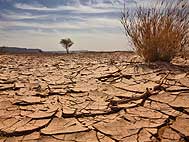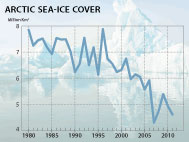| SEARCH |
-

Nov 17, 2015
Reflections on a three-decade legacy
The International Geosphere-Biosphere Programme (IGBP) will come to a close at t...
-
Nov 17, 2015
Use of and access to content on this website
Text and images produced by IGBP in house are free to use with appropriate credi...
-
Nov 12, 2015
Bella Gaia performance and panel discussion to mark IGBP's closure
A musical performance by Bella Gaia will celebrate the achievements and legacy o...
-

Towards Future Earth:
evolution or revolution?
During its three decades of existence, the International Geosphere-Biosphere Pro...
-
A personal note on IGBP and the social sciences
Humans are an integral component of the Earth system as conceptualised by IGBP. João Morais recalls key milestones in IGBP’s engagement with the social sciences and offers some words of advice for Future Earth.
-
IGBP and Earth observation:
a co-evolution
The iconic images of Earth beamed back by the earliest spacecraft helped to galvanise interest in our planet’s environment. The subsequent evolution and development of satellites for Earth observation has been intricately linked with that of IGBP and other global-change research programmes, write Jack Kaye and Cat Downy .
-
Deltas at risk
Around 500 million people worldwide live on deltas, but many of the world's deltas are sinking due ...
-
Climate change: the state of the science
A new data visualization released on the first day of the plenary negotiations at the UNFCCC’s clima...
-
Climate Change:
the State of the Science
Videos now online from the Stockholm public forum to mark the launch of the IPCC's climate report, 2...
Detecting regional anthropogenic trends in ocean acidification against natural variability
Nature Climate Change (2012)
Friedrich T, Timmermann A, Abe-Ouchi A, Bates N R, Chikamoto M O, Church M J, Dore J E, Gledhill D K, González-Dávila M, Heinemann M, Ilyina T, Jungclaus J H, McLeod E, Mouchet A and Santana-Casiano J M
DOI: 10.1038/nclimate1372
Vol 2, pp 167-171

Abstract
Since the beginning of the Industrial Revolution humans have released ~500 billion metric tons of carbon to the atmosphere through fossil-fuel burning, cement production and land-use changes(1.2). About 30% has been taken up by the oceans(3). The oceanic uptake of carbon dioxide leads to changes in marine carbonate chemistry resulting in a decrease of seawater pH and carbonate ion concentration, commonly referred to as ocean acidification. Ocean acidification is considered a major threat to calcifying organisms(4.5.6). Detecting its magnitude and impacts on regional scales requires accurate knowledge of the level of natural variability of surface ocean carbonate ion concentrations on seasonal to annual timescales and beyond. Ocean observations are severely limited with respect to providing reliable estimates of the signal-to-noise ratio of human-induced trends in carbonate chemistry against natural factors. Using three Earth system models we show that the current anthropogenic trend in ocean acidification already exceeds the level of natural variability by up to 30 times on regional scales. Furthermore, it is demonstrated that the current rates of ocean acidification at monitoring sites in the Atlantic and Pacific oceans exceed those experienced during the last glacial termination by two orders of magnitude.
IGBP closed at the end of 2015. This website is no longer updated.
-

Global Change Magazine No. 84
This final issue of the magazine takes stock of IGBP’s scientific and institutional accomplishments as well as its contributions to policy and capacity building. It features interviews of several past...
-

Global Change Magazine No. 83
This issue features a special section on carbon. You can read about peak greenhouse-gas emissions in China, the mitigation of black carbon emissions and the effect of the 2010-2011 La Niña event on gl...
-
INTERGOVERNMENTAL PANEL ON CLIMATE CHANGE:
How green is my future?
UN panel foresees big growth in renewable energy, but policies will dictate just how big.
-
UK:
'The Anthropocene: a new epoch of geological time?'
Royal Society, Philosphical Transactions A




















